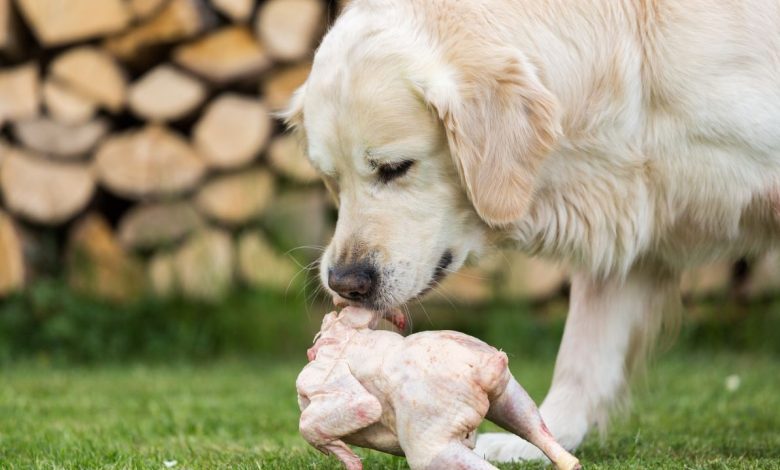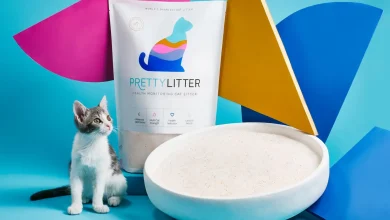The Raw Truth: Debunking Myths About Raw Dog Food Diets
Debunking Myths About Raw Dog Food Diets

The debate over raw dog food diets has gained momentum in recent years, with proponents highlighting the potential benefits of a diet that closely resembles what dogs ate in the wild. However, along with growing interest, various myths and misconceptions have emerged, contributing to confusion among pet owners. In this comprehensive guide, we will delve into the raw truth about raw dog food diets, debunking common myths and shedding light on the facts surrounding this controversial feeding approach.
 1. Raw Dog Food Are Unbalanced and Lack Essential Nutrients:
1. Raw Dog Food Are Unbalanced and Lack Essential Nutrients:
Well-formulated raw dog food diets can be nutritionally complete and balanced. A properly designed raw diet includes a variety of meats, bones, organs, and vegetables, providing essential proteins, fats, vitamins, and minerals. However, it’s crucial to follow a recipe or consult with a veterinary nutritionist to ensure that the diet meets the specific nutritional needs of your dog.
2. Raw Diets Pose Health Risks to Dogs and Humans Due to Bacteria:
While raw meat can carry bacteria like Salmonella or E. coli, dogs have evolved to handle a certain level of bacteria in their diet. The canine digestive system is generally more robust than humans’, with shorter digestive tracts and higher acidity levels that can help neutralize harmful bacteria. However, proper handling and hygiene practices, such as washing hands and cleaning feeding bowls, are essential to minimize any potential risks.
3. Raw Bones Are Dangerous and Prone to Splintering:
Raw bones can be a safe and natural source of dental enrichment and nutrition for dogs. However, cooked bones are more prone to splintering and can pose a choking or digestive hazard. When feeding raw bones, choose appropriate sizes and monitor your dog during chewing sessions to prevent any potential issues.
4. Raw Diets Are Expensive and Time-Consuming:
While raw dog food may seem costly initially, they can be comparable to high-quality commercial dog foods when considering the long-term health benefits and potential savings on veterinary bills. Additionally, there are convenient pre-packaged raw food options available, making raw feeding more accessible for busy pet owners.
5. All Dogs Can Easily Transition to a Raw Diet:
Individual dogs may have different responses to a raw diet. Some dogs transition seamlessly, while others may experience digestive issues or resist the new food. It’s essential to introduce a raw diet gradually, monitor your dog’s response, and make adjustments as needed.
6. Commercial Dog Foods Are Always Superior to Homemade Raw Diets:
The quality of commercial raw dog food can vary widely, and some high-quality commercial options provide complete and balanced nutrition. However, homemade raw diets can offer more control over ingredients and quality. It’s crucial to choose reputable commercial brands or work with a veterinary nutritionist when formulating homemade diets.
7. Raw Diets Can Cause Nutrient Imbalances and Deficiencies:
Nutrient imbalances can occur in poorly formulated raw diets or when pet owners don’t follow a well-rounded recipe. However, with proper planning and attention to nutritional requirements, raw diets can be nutritionally complete. Regular veterinary check-ups and occasional blood tests can help identify and address any potential deficiencies.
8. Raw Diets Are Not Suitable for Puppies or Senior Dogs:
raw dog food can be adapted to meet the specific needs of puppies, adults, and senior dogs. Puppies require a diet rich in nutrients for growth, while senior dogs may benefit from modifications to address age-related changes. Consult with your veterinarian to ensure that the raw diet aligns with your dog’s life stage.
Conclusion:
The decision to feed raw dog food diet is a personal one that should be based on careful consideration of facts rather than myths. While raw diets can offer potential benefits, it’s essential to approach them with a clear understanding of the nutritional requirements, potential risks, and individual needs of your dog.
By debunking common myths and embracing the raw truth about raw dog food diets, pet owners can make informed decisions that align with their dogs’ health and well-being. Consulting with a veterinarian, carefully planning the diet, and monitoring your dog’s response are key steps to ensuring a successful transition to a raw diet if you choose to pursue this feeding approach.








